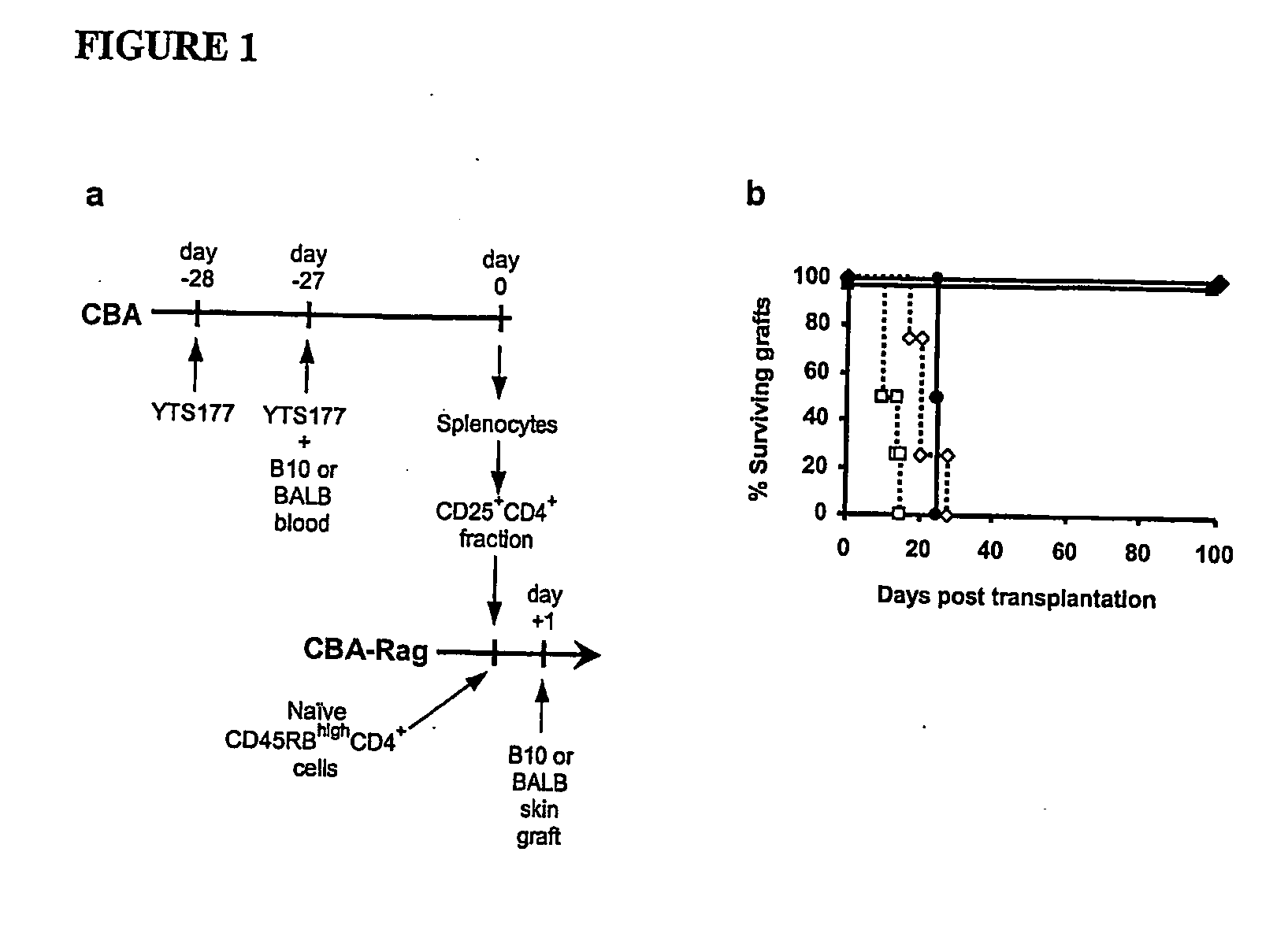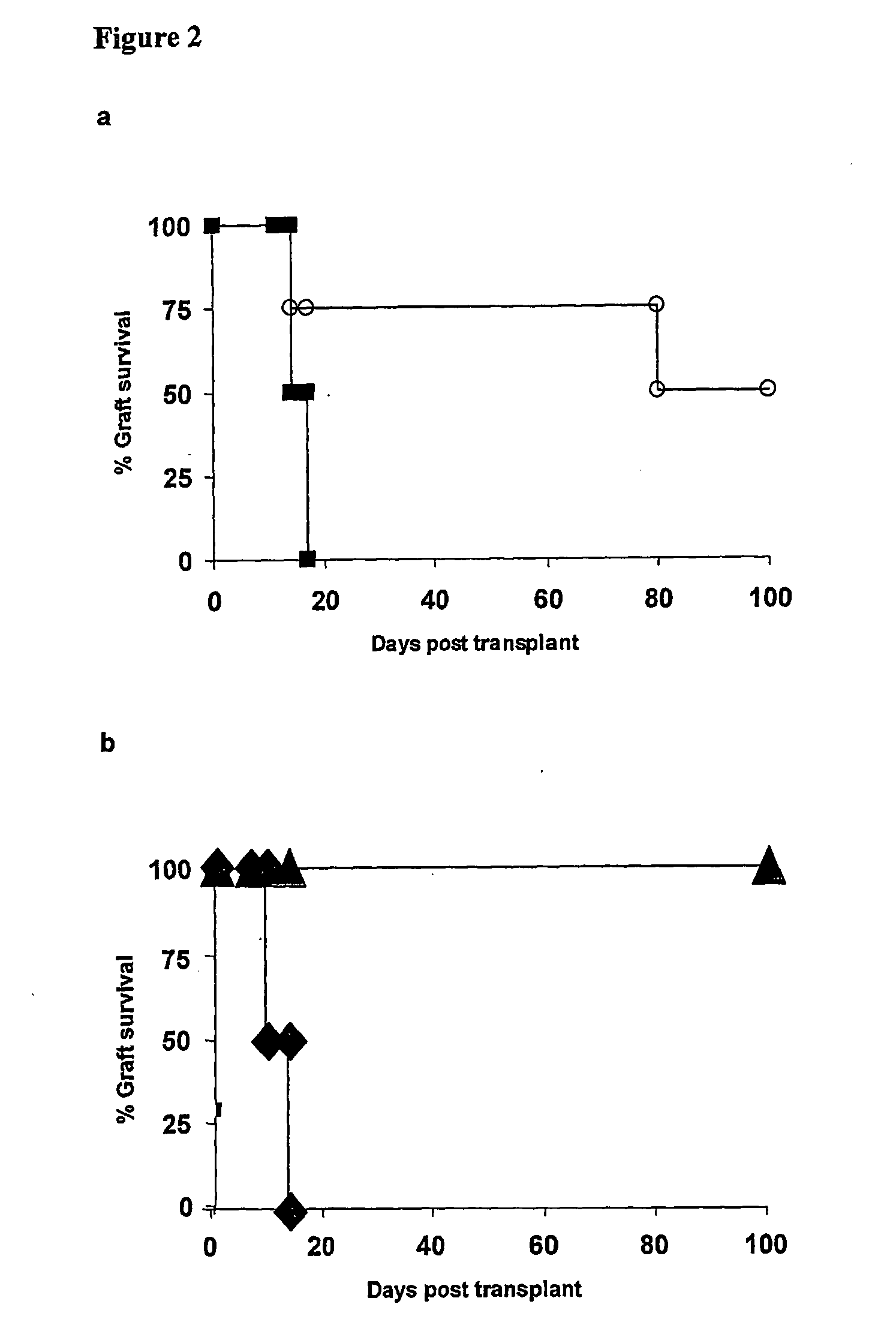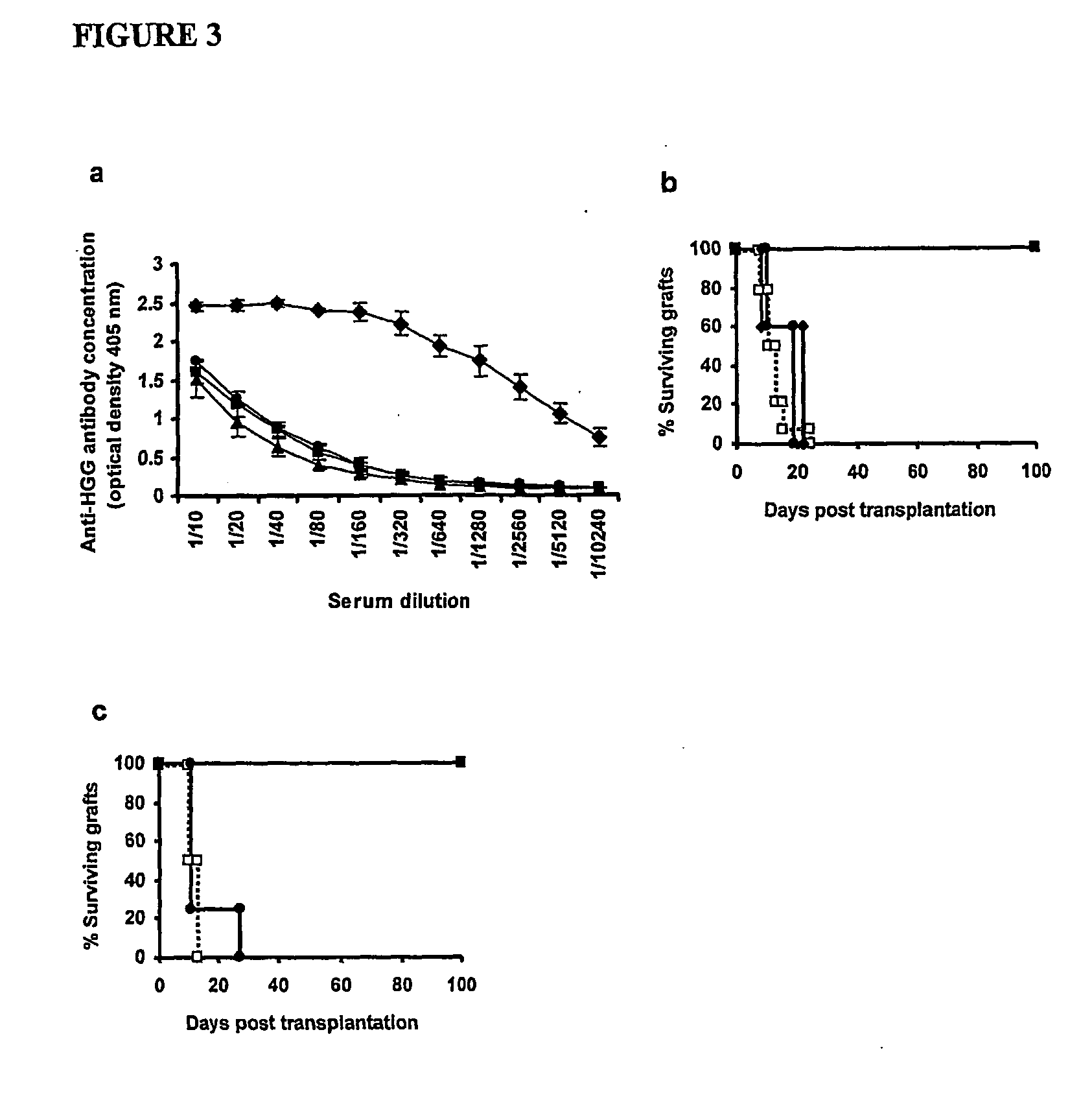Suppression of transplant rejection
a transplant and rejection technology, applied in the field of transplant rejection suppression in animals, can solve the problems of non-specific regulation of t-reg by pre-activated t-reg in vivo, risk of blood-borne pathogen transmission, and 100% risk of some types of cancer
- Summary
- Abstract
- Description
- Claims
- Application Information
AI Technical Summary
Problems solved by technology
Method used
Image
Examples
examples
[0063] The invention is based on and illustrated by the following experimental work. The experiments are described in general terms followed by more detailed description with reference to the Figures and lastly more detailed description of some of the methods.
experiment 1
Alloantigen-Induced T-Regs Control the Rejection of Donor-Specific Skin Grafts
[0064] In order to provide a basis for answering questions about the antigen specificity of T-reg, CD25+CD4+ cells were isolated from CBA (H2) mice pre-treated with the anti-CD4 antibody YTS 177 together with blood from either B10 (H2b) or BALB H2d) mice and transferred them into syngeneic immunodeficient CBA-Rag− / − mice together with CD45RBhighCD4+ effector cells. One day later these recipients were transplanted with skin grafts either matched to the blood transfusion donor or from a third party strain (FIG. 1a). Animals reconstituted with effector cells alone acutely rejected both B10 and BALB skin allogras, and as shown previously24 CD25+CD4+ cells isolated from mice pre-treated with YTS177 and B10 blood prevented the rejection of donor-specific B10 allografts (FIG. 1b). This phenomenon was not restricted to a single donor / recipient strain combination, as CD25+CD4+ cells from mice pre-treated with YTS...
experiment 2
Regulatory T Cells Generated In Vitro by Pre-Culturing CD4+ T cells with Anti-CD4 Monoclonal Antibody (mAb) Can Control the Rejection of Donor-Specific Skin Grafts
[0065] CD4+ T cells from naive CBA mice were cultured with irradiated antigen presenting cells from C57Bl / 10 mice in the presence of 5 μg / ml of 177 YTS anti-CD4 antibody.
[0066] After 8 days in culture total CD4+ or CD62L+CD25+CD4+CBA T cells pre-cultured with anti-CD4 mAb were transferred into syngeneic immunodeficient CBA-Rag− / − mice together with CD45RBhighCD4+ effector cells. One day later these recipients were transplanted with skin grafts matched to the alloantigen used for the in vitro culture. Animals reconstituted with effector cells alone acutely rejected both B10 skin allografts, while cells isolated from the in vitro cultures prevented the rejection of donor-specific B10 allografts (FIG. 2a). The population of regulatory T cells generated in vitro could be further enriched by purifying cells CD62L+ CD25+CD4+ ...
PUM
| Property | Measurement | Unit |
|---|---|---|
| Dimensionless property | aaaaa | aaaaa |
| Dimensionless property | aaaaa | aaaaa |
| Therapeutic | aaaaa | aaaaa |
Abstract
Description
Claims
Application Information
 Login to View More
Login to View More - R&D
- Intellectual Property
- Life Sciences
- Materials
- Tech Scout
- Unparalleled Data Quality
- Higher Quality Content
- 60% Fewer Hallucinations
Browse by: Latest US Patents, China's latest patents, Technical Efficacy Thesaurus, Application Domain, Technology Topic, Popular Technical Reports.
© 2025 PatSnap. All rights reserved.Legal|Privacy policy|Modern Slavery Act Transparency Statement|Sitemap|About US| Contact US: help@patsnap.com



